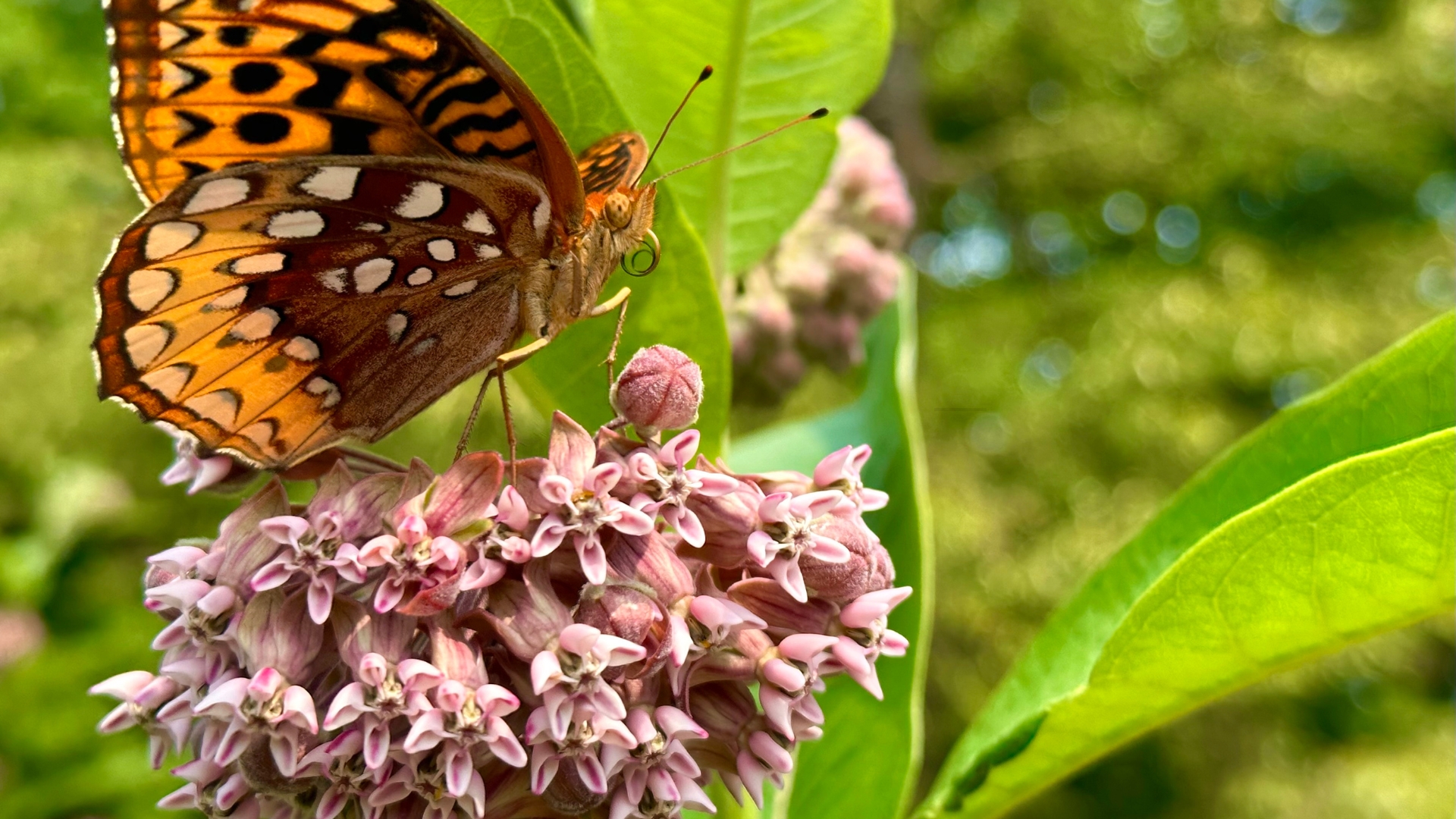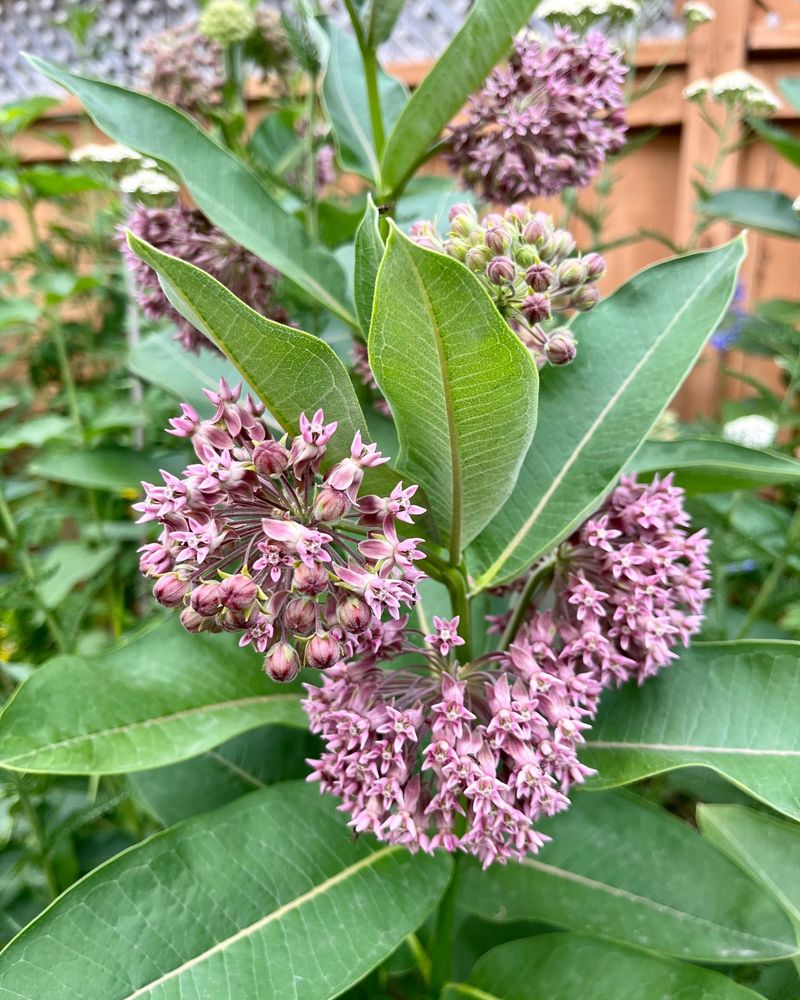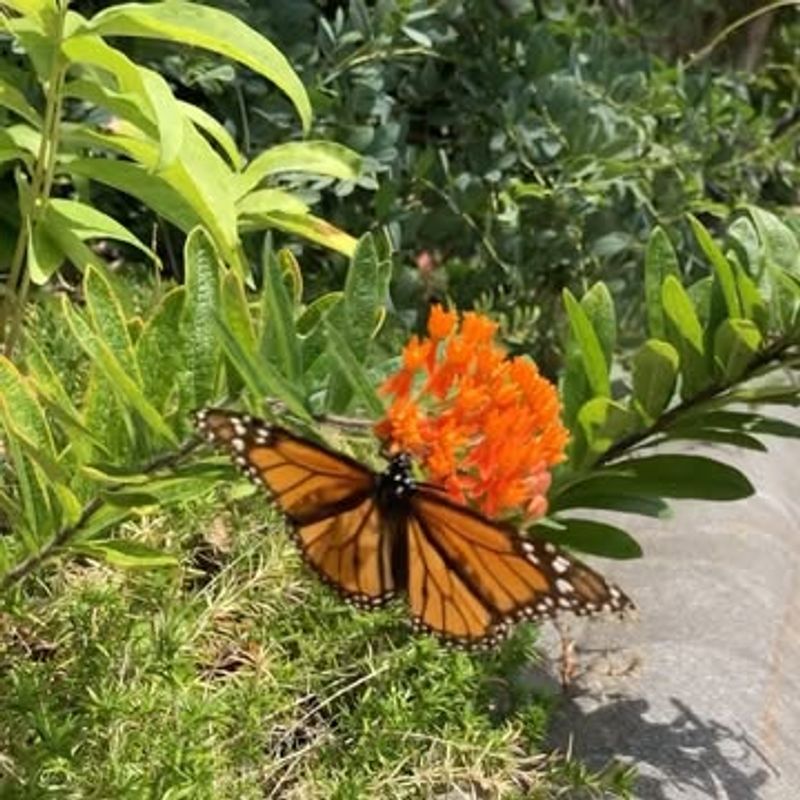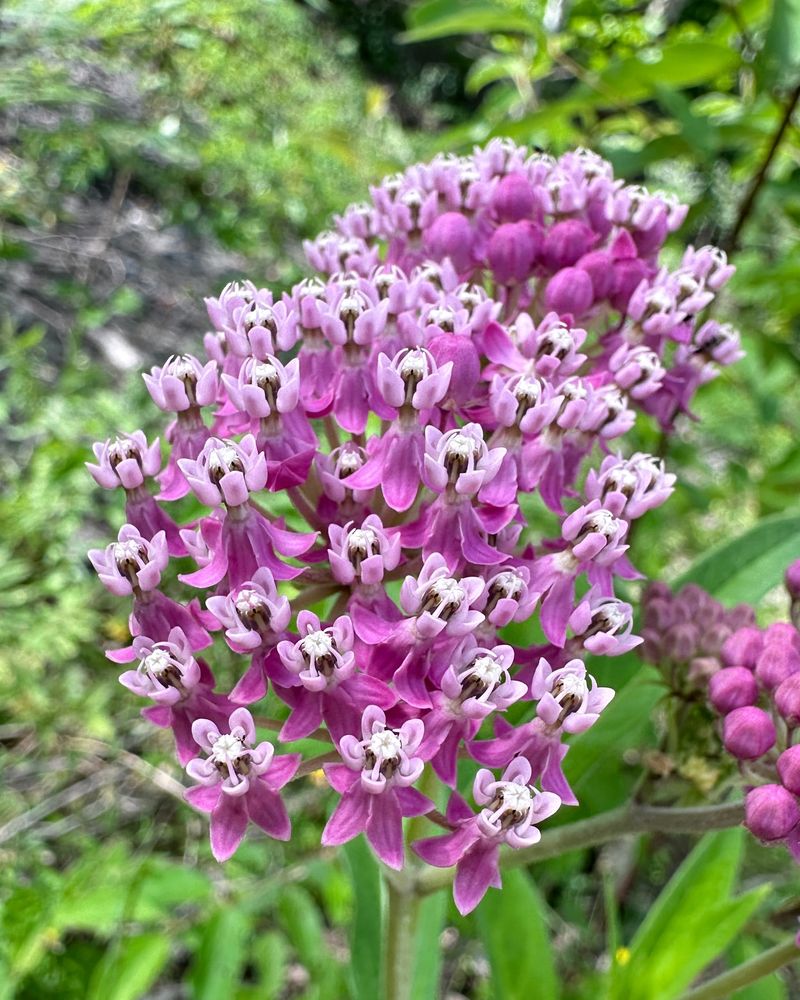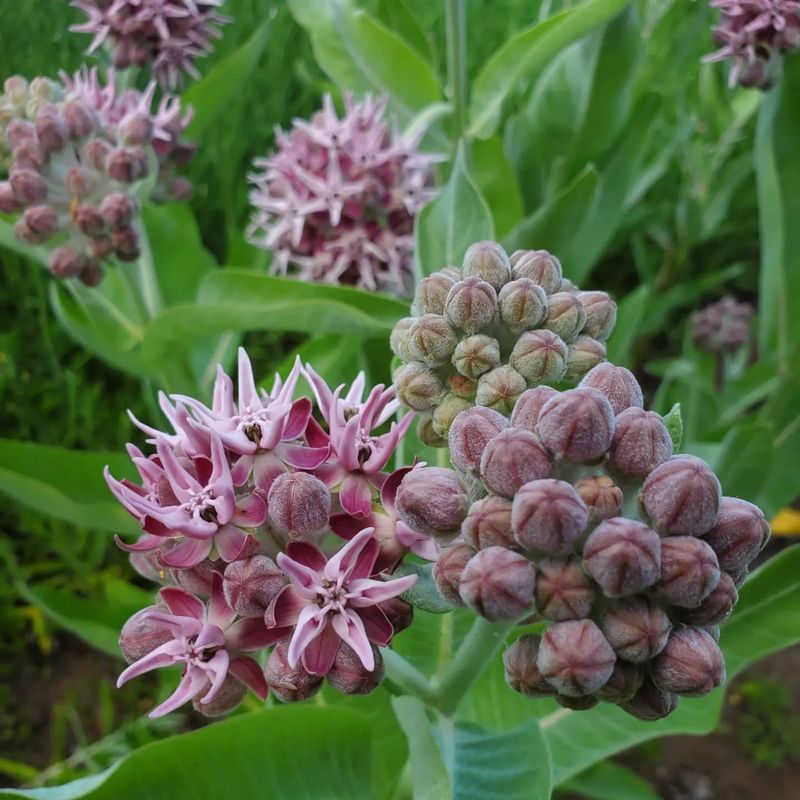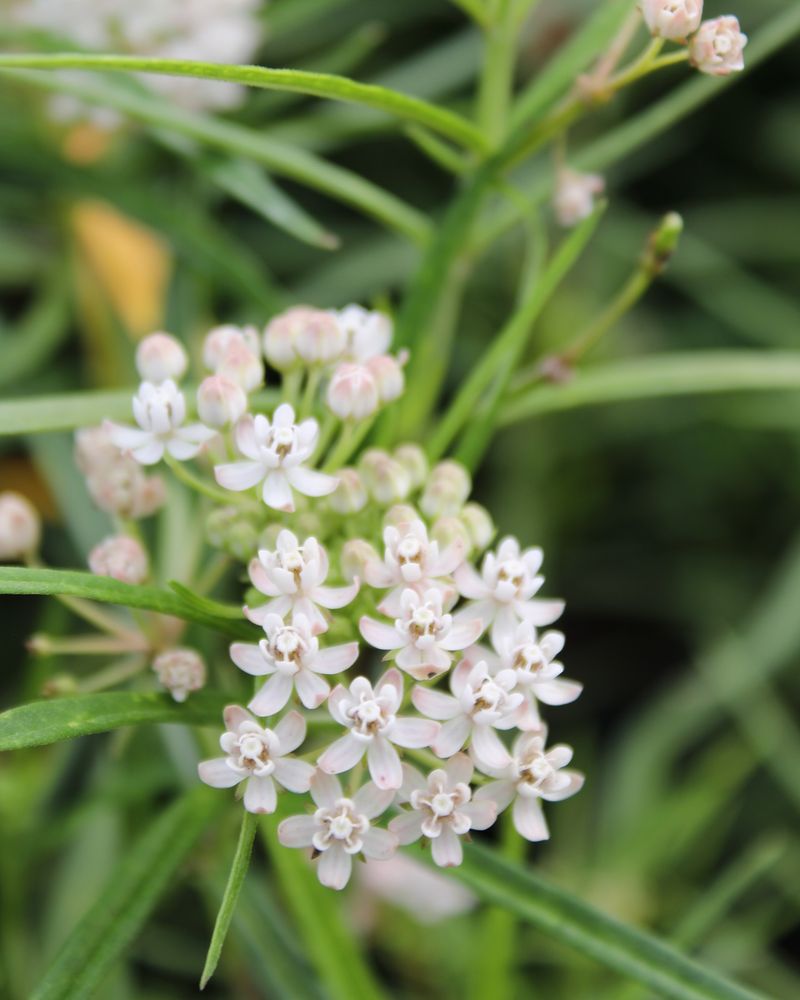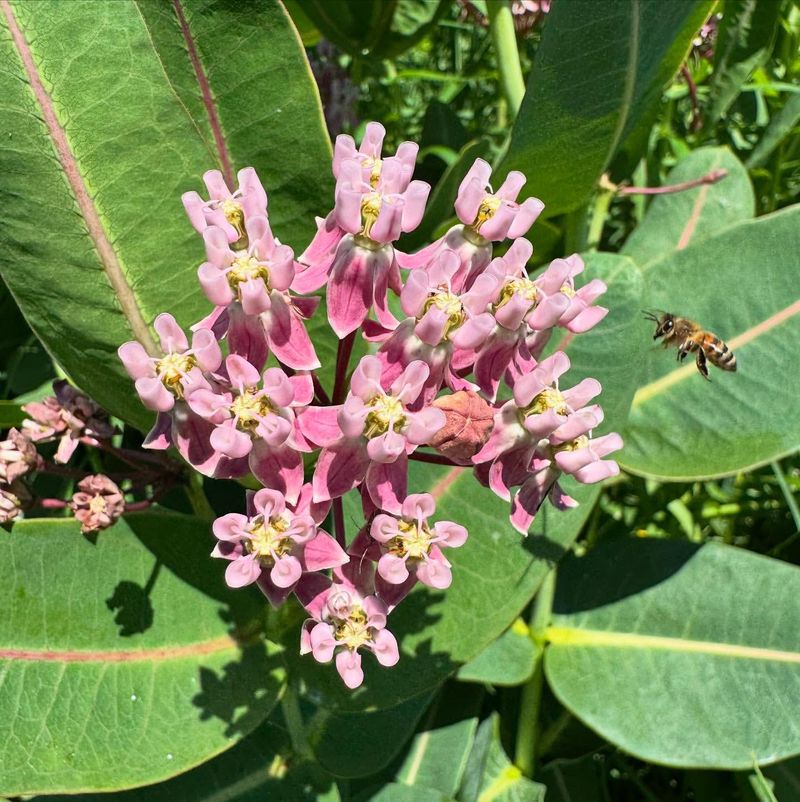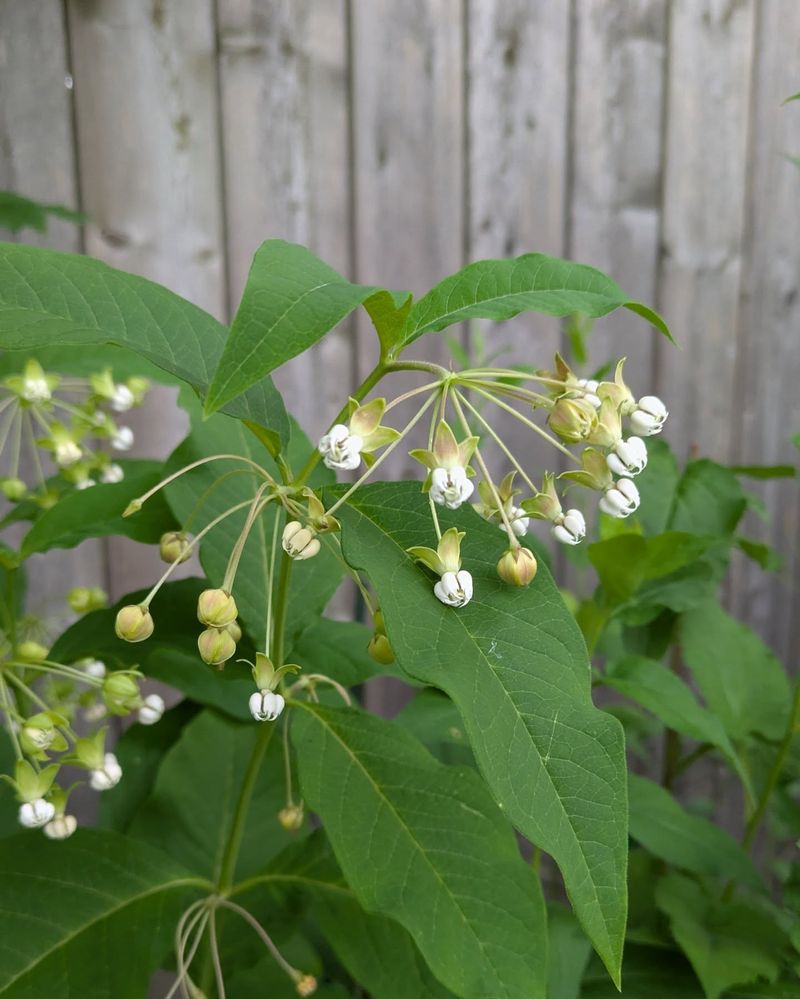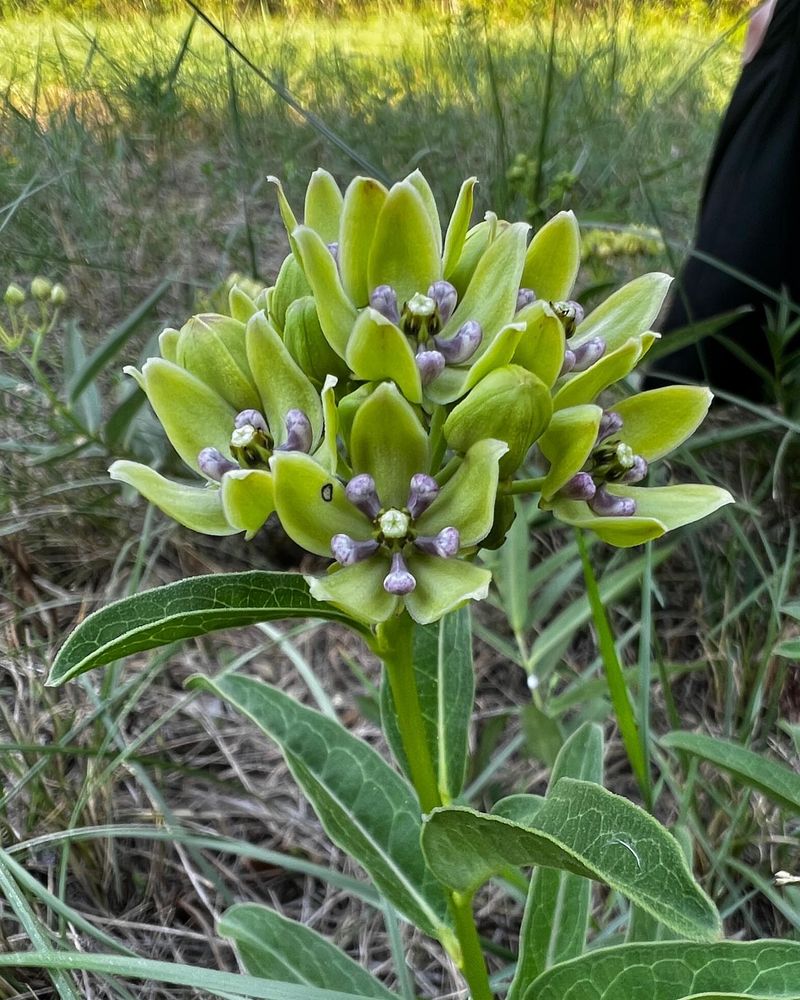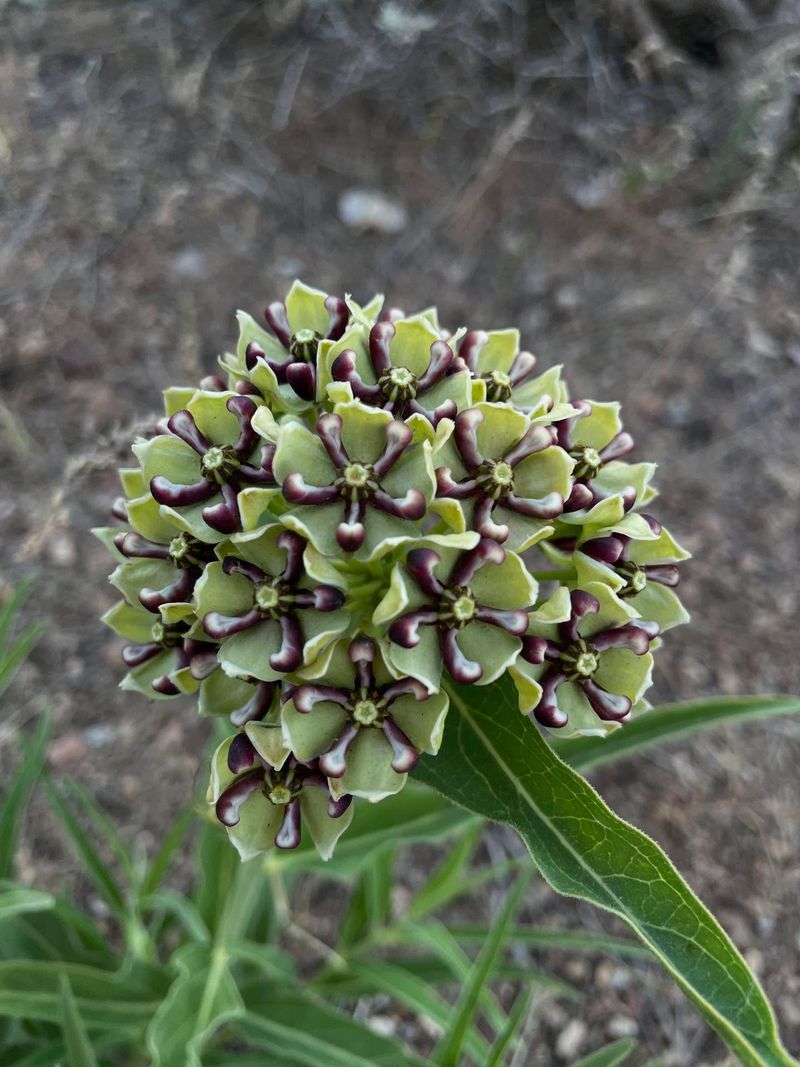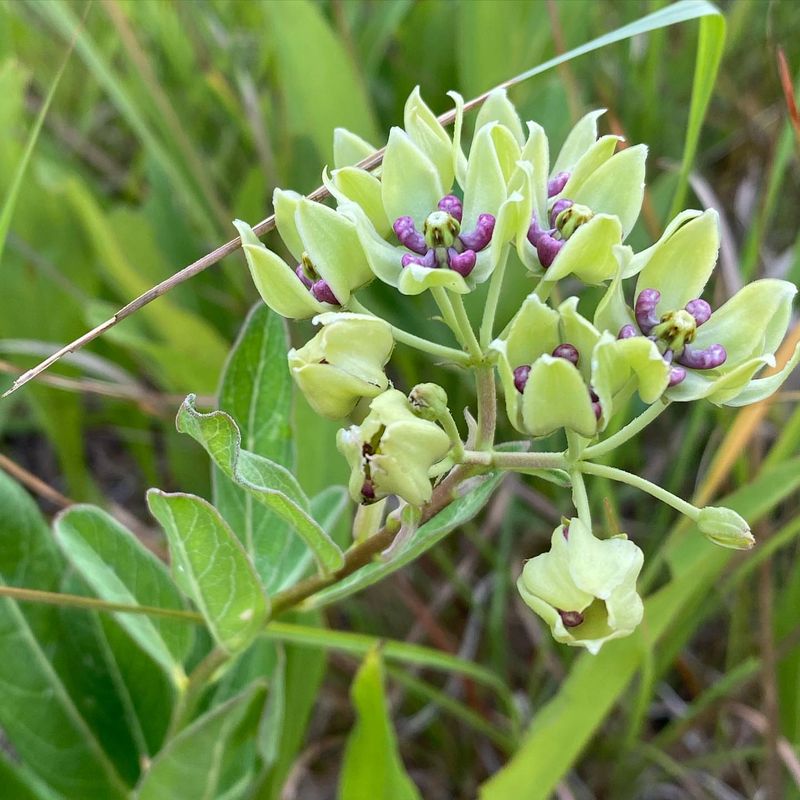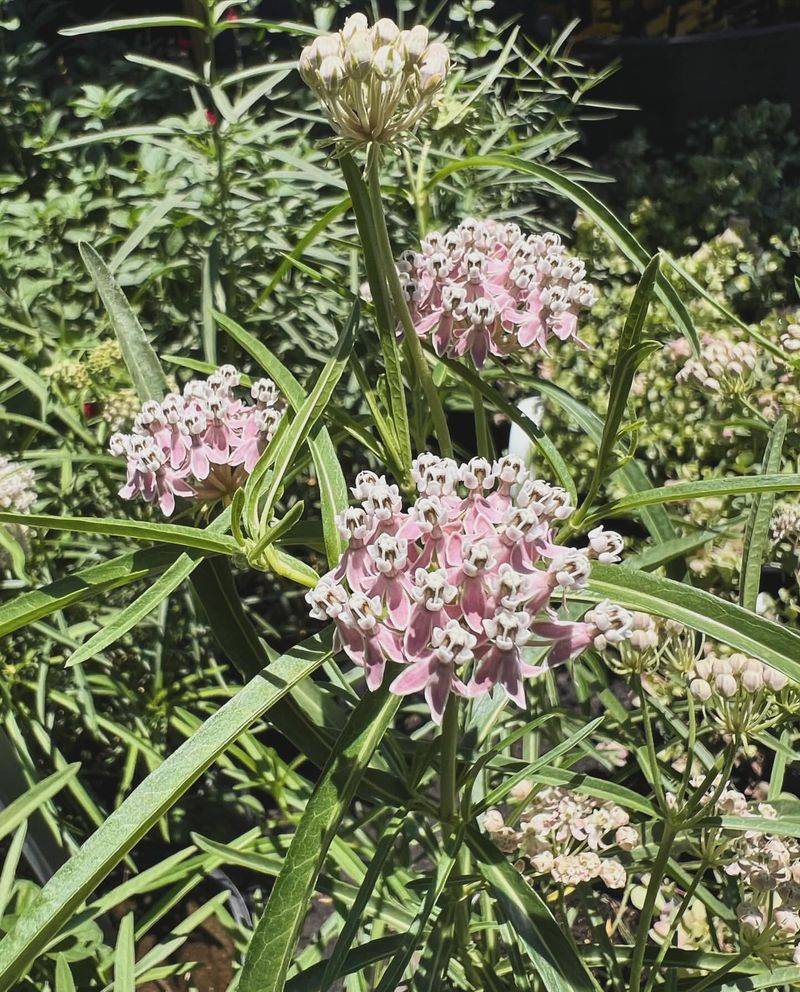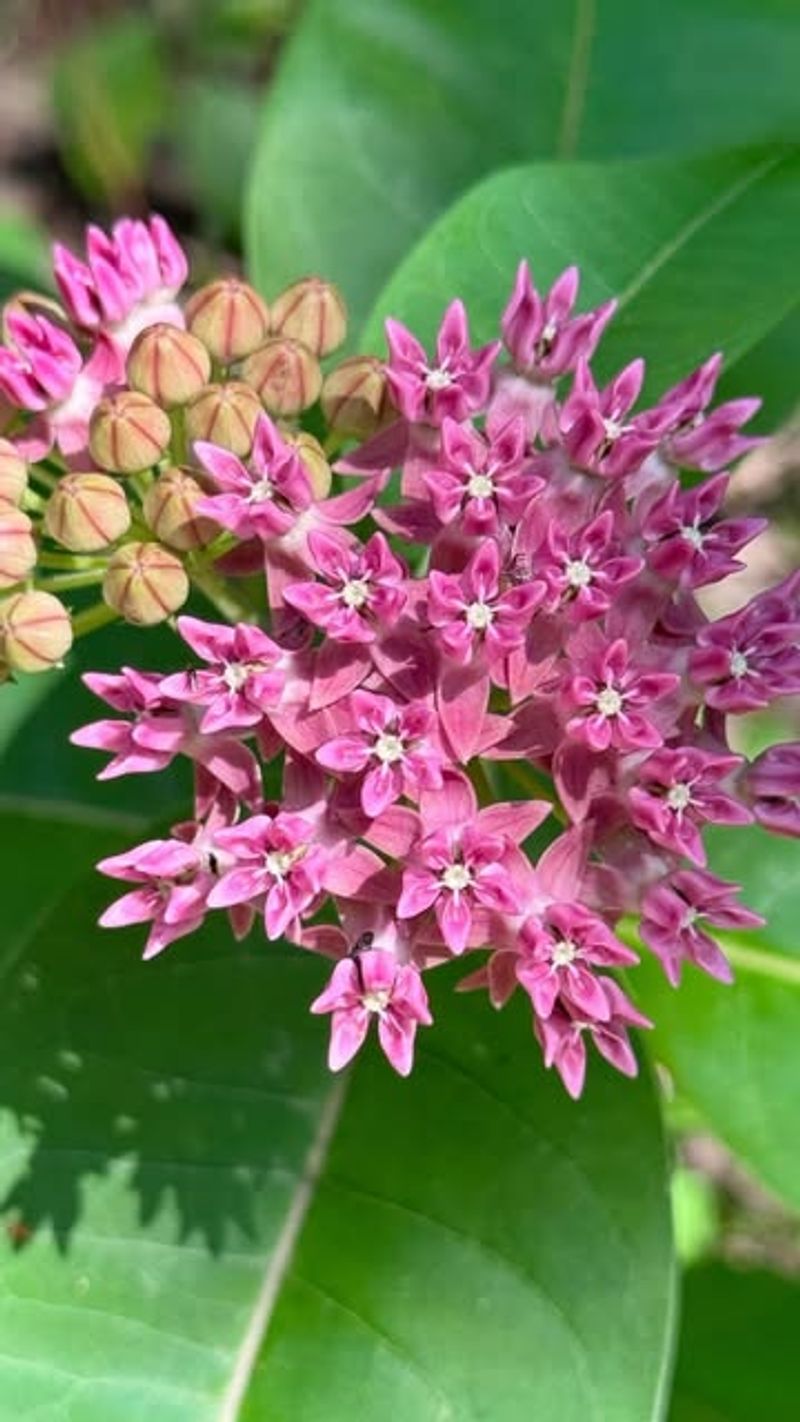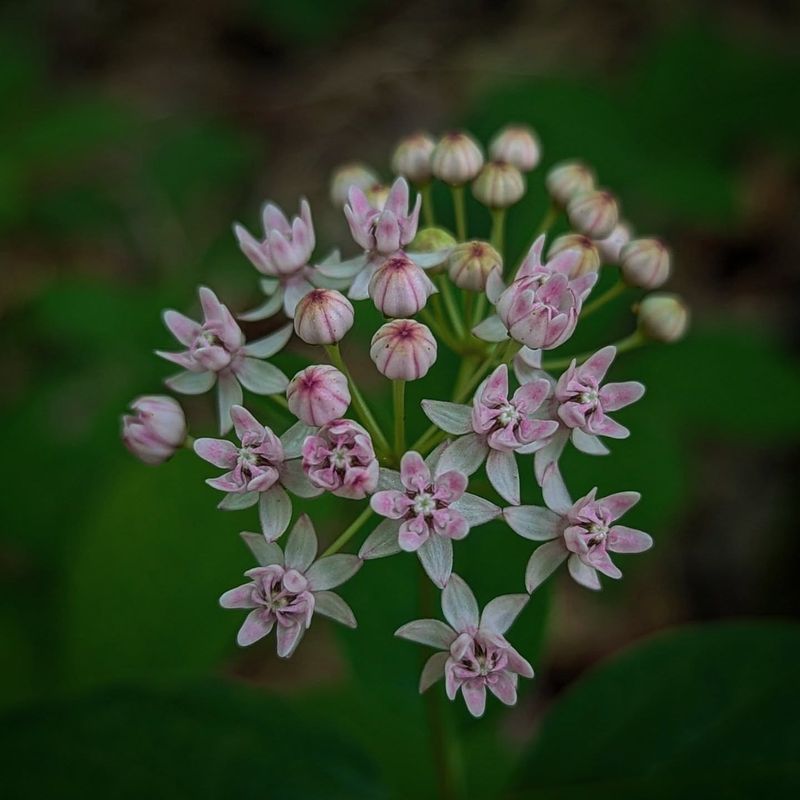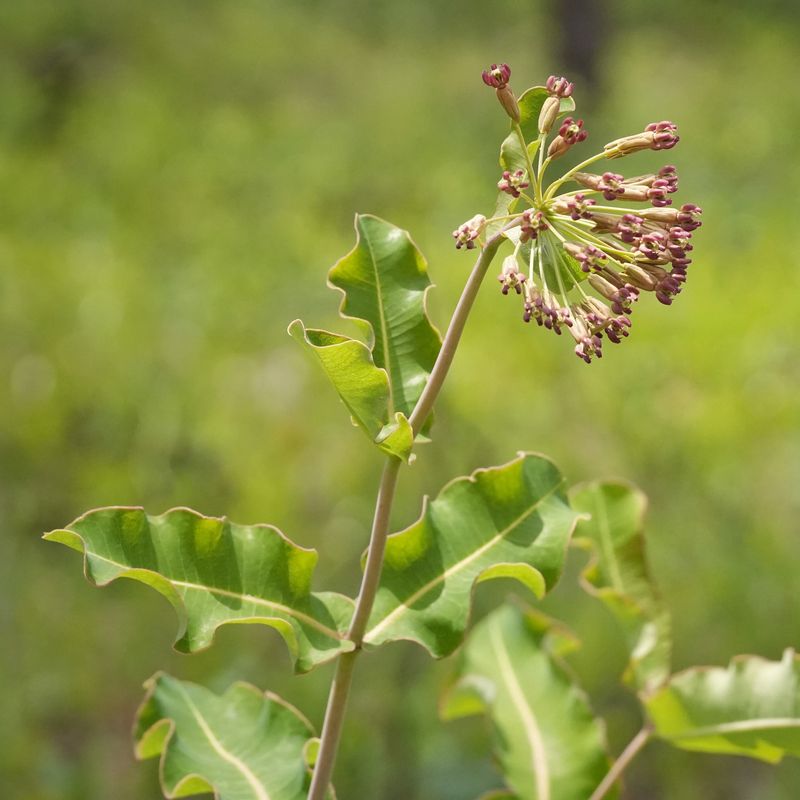If you want more butterflies in your garden, milkweed is the magic plant to grow. It’s the number-one host for monarchs and a favorite nectar stop for many other species, too.
Some kinds grow tall and bold, others are soft and delicate—but all of them help pollinators thrive. Plant a few, and your garden will start fluttering with color.
1. Common Milkweed (Asclepias syriaca)
The backbone of any butterfly garden, common milkweed stands tall with clusters of mauve-pink flowers that release a sweet vanilla scent. Native to eastern North America, this hardy perennial attracts monarchs by the dozens.
Its sturdy stems reach 4-6 feet tall, creating dramatic vertical interest in meadow gardens. The thick oval leaves provide perfect nurseries for monarch eggs, while the flower clusters offer abundant nectar for adult butterflies.
2. Butterfly Weed (Asclepias tuberosa)
Fiery orange flower clusters make butterfly weed an absolute showstopper in summer gardens. Unlike its milky-sapped cousins, this milkweed variety contains clear sap and thrives in dry, rocky soils where other plants struggle.
Reaching about 2 feet tall, butterfly weed forms a compact, bushy shape perfect for borders and containers. The vibrant blooms appear from early summer through fall, providing a long-lasting nectar source for monarchs, swallowtails, and many other butterfly species.
Cold-hardy and heat-tolerant, this native beauty requires almost no maintenance once established.
3. Swamp Milkweed (Asclepias incarnata)
Don’t let the name fool you—swamp milkweed doesn’t need a bog to thrive! This elegant native produces clusters of rosy-pink flowers that butterflies simply cannot resist.
Perfect for rain gardens or areas with moist soil, it adds vertical interest with its 3-4 foot height. The slender, willowy stems bear lance-shaped leaves that monarchs adore for egg-laying. In late summer, fascinating seed pods form, eventually splitting open to release silky-tufted seeds that float on the breeze. Swamp milkweed stays well-behaved in garden settings, forming neat clumps that play well with neighbors.
4. Showy Milkweed (Asclepias speciosa)
Star-shaped blooms with curved petals give showy milkweed its well-deserved name. Native to western North America, this striking plant features large, rounded flower clusters in soft pink to purplish hues that seem to glow in the evening light.
Growing 2-4 feet tall, showy milkweed sports broad, velvety gray-green leaves that create beautiful contrast in the garden. The flowers emit a sweet fragrance that draws in butterflies from surprising distances.
5. Whorled Milkweed (Asclepias verticillata)
Delicate and airy, whorled milkweed offers a completely different look from its bolder cousins. Fine, needle-like leaves arranged in whorls around slender stems create an almost feathery texture in the garden landscape.
Small white flower clusters appear in mid-summer, attracting smaller butterfly species along with monarchs. Standing just 1-2 feet tall, this petite milkweed fits beautifully in rock gardens or at the front of perennial borders.
Extremely drought-tolerant once established, whorled milkweed thrives in poor, dry soils where many other plants would fail. Its non-aggressive nature makes it perfect for smaller gardens.
6. Tropical Milkweed (Asclepias curassavica)
Vibrant red and yellow blooms make tropical milkweed an eye-catching addition to any butterfly garden. This non-native species flowers continuously from spring until frost, providing reliable nectar and egg-laying sites for monarchs.
Growing 2-3 feet tall, tropical milkweed’s compact size works well in containers and small spaces. The bright flowers create stunning color combinations when paired with blue or purple flowering plants. In northern climates, treat it as an annual or bring potted plants indoors for winter.
7. Prairie Milkweed (Asclepias sullivantii)
Resembling a refined version of common milkweed, prairie milkweed offers cleaner foliage and a more garden-friendly habit. The smooth, blue-green leaves provide a sophisticated backdrop for the rosy-pink flower clusters that appear in early summer.
Growing 2-3 feet tall, prairie milkweed stays more contained than its common cousin, making it suitable for formal garden settings. Monarchs particularly favor this species for egg-laying, often choosing it first among available milkweeds.
8. Poke Milkweed (Asclepias exaltata)
Shade-loving poke milkweed brings butterfly habitat to woodland gardens where other milkweeds won’t grow. The loose clusters of greenish-white flowers dangle elegantly from tall stems, creating a graceful presence under tree canopies.
Growing 3-5 feet tall, poke milkweed’s height adds vertical interest to shaded areas. The broad, pointed leaves provide ample food for monarch caterpillars, while the subtle flowers attract numerous forest-dwelling butterfly species.
9. Green Milkweed (Asclepias viridis)
Fascinating green-and-purple star-shaped blooms make green milkweed a conversation starter in any garden. Native to the southern and central United States, this milkweed species offers a completely different aesthetic from its pink and orange relatives.
Growing just 1-2 feet tall, green milkweed’s compact size works beautifully in borders and small gardens. The wavy-edged leaves have a bluish cast that complements the unusual flower color.
10. Antelope Horns Milkweed (Asclepias asperula)
Named for its curved seed pods that resemble antelope horns, this southwestern native brings unique character to dry gardens. The greenish-white flowers with purple centers cluster at stem tips, attracting desert-adapted butterfly species along with monarchs.
Low-growing and sprawling, antelope horns milkweed reaches just 1-2 feet tall but spreads wider. The blue-green leaves maintain their color even during extreme heat and drought, providing garden interest beyond the flowering season.
11. Spider Milkweed (Asclepias viridis)
Intricate flowers with arching hoods give spider milkweed its distinctive name and appearance. The greenish-white blooms with purple centers create starfish-like patterns that catch the eye in prairie-style plantings.
Forming a compact mound just 1-2 feet tall, spider milkweed fits perfectly in smaller spaces and rock gardens. The narrow, gray-green leaves stand up to heat and drought beautifully, maintaining good looks throughout the growing season.
12. Narrow-Leaf Milkweed (Asclepias fascicularis)
Essential for western butterfly gardens, narrow-leaf milkweed provides crucial habitat for western monarch populations. The clusters of small, pale pink to white flowers may seem unassuming, but butterflies find them irresistible.
Growing 2-3 feet tall, this California native forms loose, airy clumps with slender stems and narrow, needle-like leaves. The delicate texture contrasts beautifully with broader-leaved garden plants and ornamental grasses.
13. Purple Milkweed (Asclepias purpurascens)
Richly colored deep pink to purple flowers make this rare milkweed a garden treasure. Often mistaken for common milkweed, purple milkweed’s more intense flower color and non-spreading habit make it much more garden-friendly.
Growing 2-3 feet tall, purple milkweed forms well-behaved clumps that blend beautifully into perennial borders. The broad, velvety leaves provide excellent monarch caterpillar habitat, while the fragrant flowers attract numerous butterfly species.
14. Four-Leaved Milkweed (Asclepias quadrifolia)
Delicate and shade-tolerant, four-leaved milkweed brings butterfly habitat to woodland gardens. Named for its distinctive leaf arrangement in whorls of four, this eastern native adds botanical interest even when not in bloom.
Standing just 1-2 feet tall, four-leaved milkweed bears dainty clusters of pale pink to white flowers that brighten shady spots. The slender stems and light foliage create a lacy texture that complements ferns and other woodland plants.
15. Mexican Whorled Milkweed (Asclepias fasciculata)
Feathery foliage and abundant white flower clusters make Mexican whorled milkweed a standout in southwestern gardens. This drought-loving native thrives in challenging conditions that would stress most garden plants.
Growing 2-3 feet tall, Mexican whorled milkweed forms airy clumps that add movement and texture to xeriscapes. The needle-like leaves, arranged in whorls around the stems, create interesting patterns throughout the growing season.
16. Clasping Milkweed (Asclepias amplexicaulis)
Architectural and distinctive, clasping milkweed stands out with its unique growth habit and flower structure. The blue-green leaves wrap around (clasp) the stem, creating an interesting visual effect even before the spectacular flowers appear.
Large, widely-spaced pink flower balls dangle from tall stems, creating a more open and airy appearance than other milkweeds. Growing 2-3 feet tall, clasping milkweed prefers sandy soils and tolerates drought once established.

